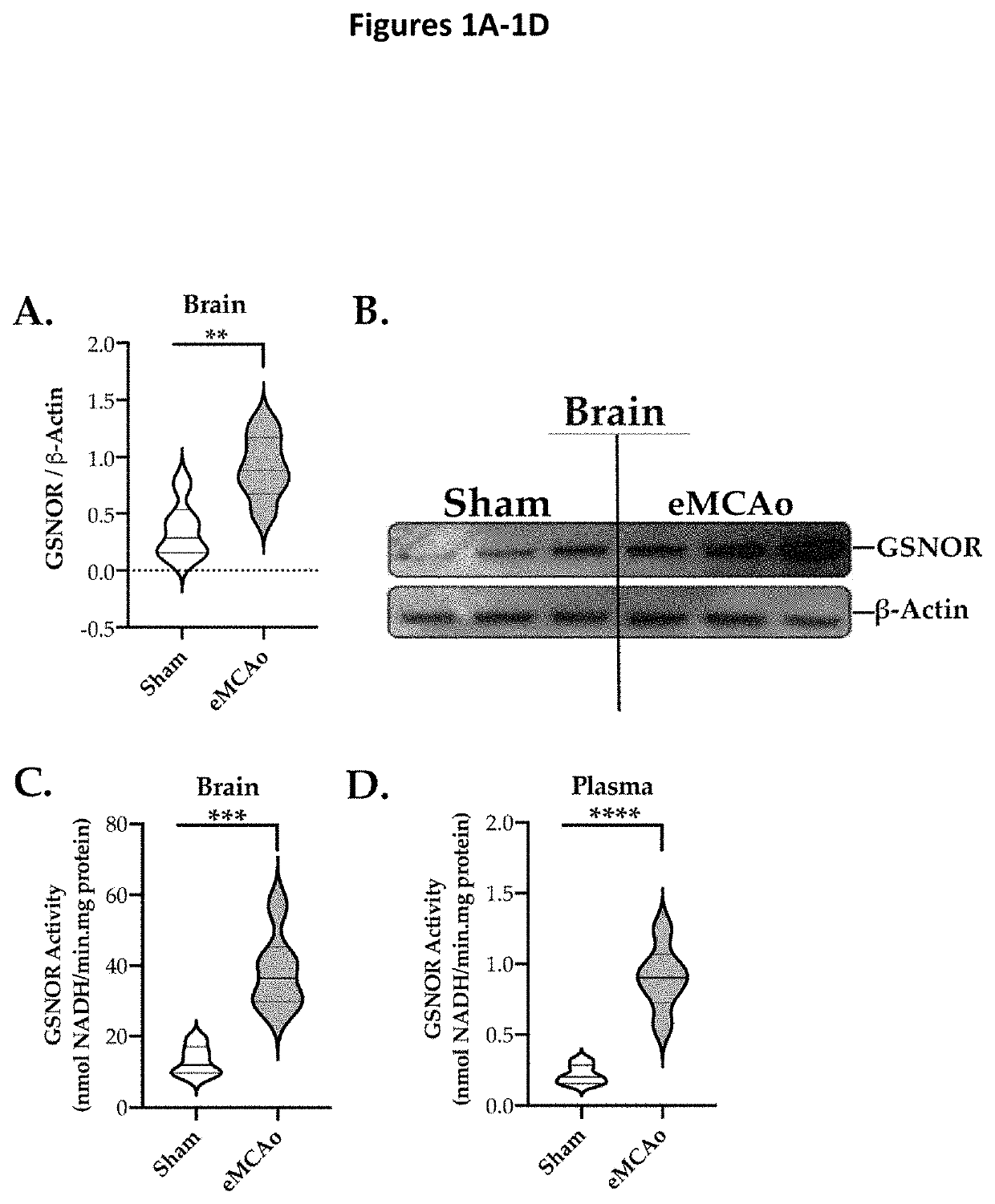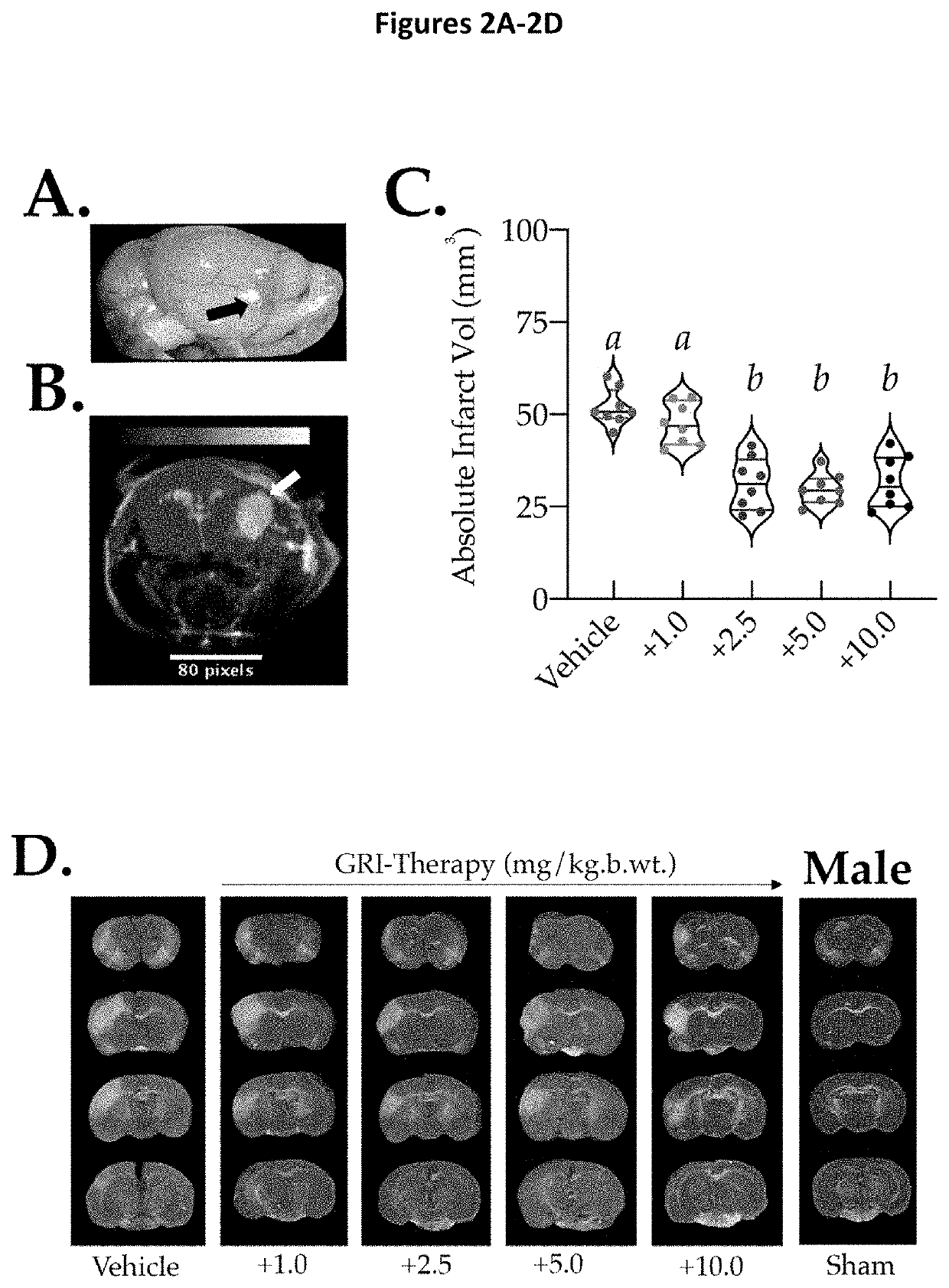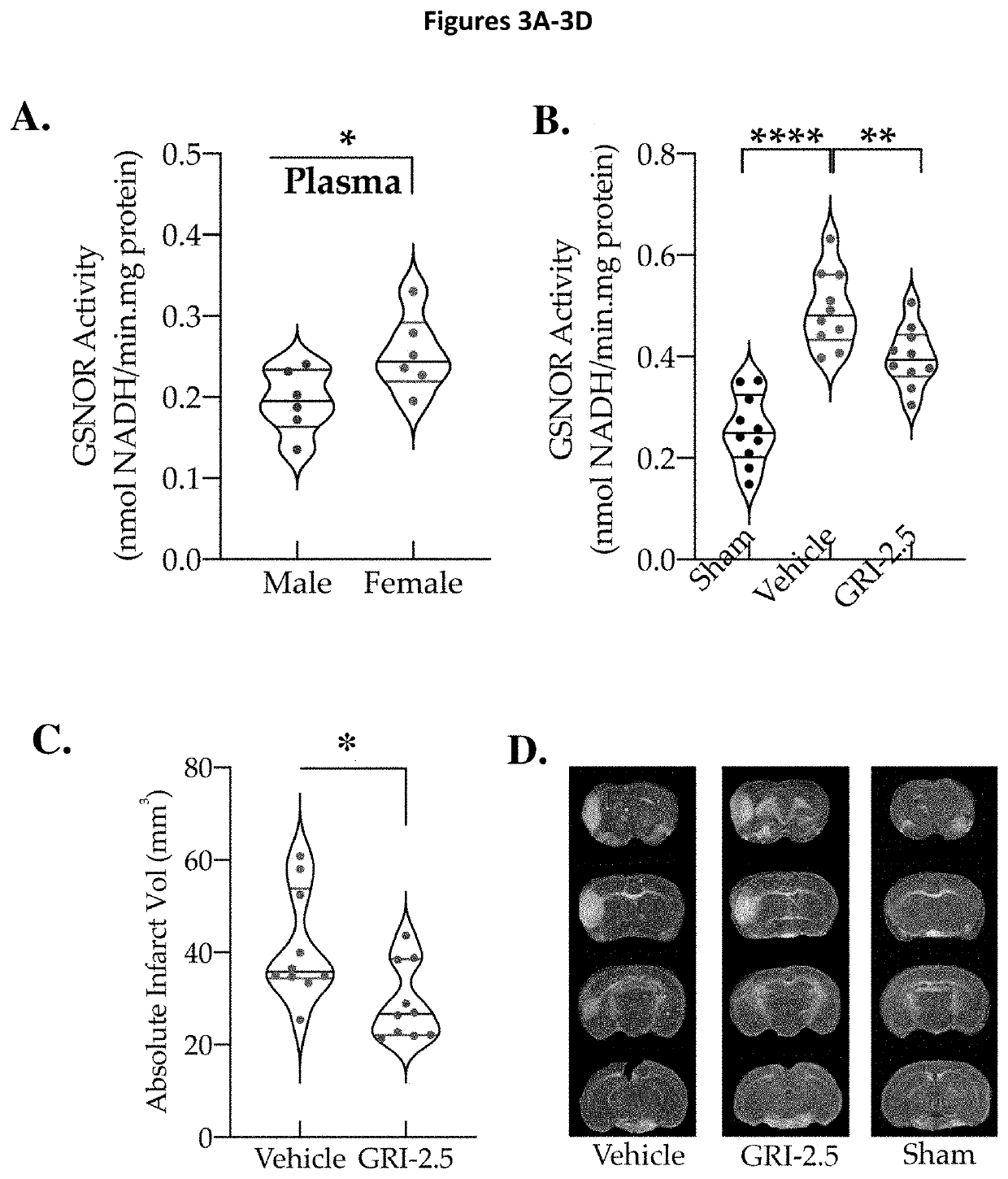GSNO reductase inhibitor as an adjunct therapy with remote ischemic conditioning and thrombolytic reperfusion therapies in cerebral thrombosis and/or thromboembolic stroke
a technology of gsno reductase inhibitor and ischemic conditioning, which is applied in the field of stroke treatment, can solve the problems of exacerbated brain injury and ht, particularly dangerous comorbidities, and achieve the effects of reducing ischemic injury and brain tissue infarct, minimizing or avoiding, and enhancing the efficacy and benefits of ri
- Summary
- Abstract
- Description
- Claims
- Application Information
AI Technical Summary
Benefits of technology
Problems solved by technology
Method used
Image
Examples
example 1
Effect of eMCAo on GSNOR Protein Expression and Activity.
[0081]The eMCAo model was chosen because it is the most clinically relevant rodent model of TE stroke. Aged (16±1-mo) mice were subjected to eMCAo / stroke using a partially-humanized TE-clot. At 6 h post-eMCAo, blood was collected via cardiac puncture to isolate plasma and mice were quickly flushed-perfused with 25-mL of chilled 0.1M PBS prior to collecting brain samples. Both plasma and brain samples were snap-frozen in liquid nitrogen until assays. FIGS. 1A and 1B show whole brain assay and the resultant relative normalized densitometry data confirmed that the protein expression of GSNOR was significantly (p<0.01) increased as early as 6 h post-stroke as compared to sham-operated group. An activity assay based on the rate of GSNO-dependent consumption of NADH further confirmed that the increase in protein expression of GSNOR translated into significant (p<0.001) acute increase in the enzymatic activity of GSNOR as early as 6 ...
example 2
Effect of GRI Therapy in Aged Mice of Both Sexes Following PT Stroke.
[0083]The PT stroke model was chosen because it is a thrombotic model of moderate injury. FIG. 2A shows a representative image of whole brain collected immediately after stroke to confirm the site (black arrow) of occlusion in MCA region. FIG. 2B shows a Z-projection of a T2-weighted MR-image 48 h after stroke. The site of stroke injury is indicated with a white arrow. Different doses of GRI therapy or equal volume of vehicle to aged male mice (N=8 / gp) given intravenously 1 h after PT-stroke (1, 2.5, 5.0 and 10 mg / kg) showed a dose-dependent neuroprotective effect. However, a plateau in the neuroprotective effect was seen beginning from the GRI dose ≥2.5 mg / kg. Densitometry showing absolute infarct volume in FIG. 2C was performed on tissues sections, including those shown in FIG. 2D. FIG. 2D shows representative TTC-stained set of coronal sections (2-μm thick) obtained from the whole brain from the aged male mice a...
example 3
GRI Therapy Protects against Permanent Ischemia Induced by pMCAo Independent of Sex
[0085]Adult mice of both sexes (14±1-weeks; N=10 / gp; females were ovariectomized, OVX) were subjected to pMCAL-stroke model with electrocauterization leading to permanent occlusion of distal MCA trunk. Mice were anesthetized with isofluorane, prepared for surgery, and the right parietal bone of the skull was exposed. A craniotomy was performed to expose the distal part of MCA trunk and the artery was permanently electrocauterized using a bipolar electrocautery. FIG. 4A shows a representative LSCI image. Immediately after stroke, a significant drop in CBF occurred. Mice were IV-treated with either GRI therapy (2.5 mg / kg) or equal volume of vehicle at 1 h after stroke and the treatment was repeated daily for 2 days.
[0086]Mice were evaluated for behavioral outcomes at 72 h post-stroke. A 2 sexes (Male vs. Female) by 2 treatments (GRI vs. Veh) ANOVA was used to analyze results. All the data are expressed ...
PUM
| Property | Measurement | Unit |
|---|---|---|
| Time | aaaaa | aaaaa |
| Time | aaaaa | aaaaa |
Abstract
Description
Claims
Application Information
 Login to View More
Login to View More - R&D
- Intellectual Property
- Life Sciences
- Materials
- Tech Scout
- Unparalleled Data Quality
- Higher Quality Content
- 60% Fewer Hallucinations
Browse by: Latest US Patents, China's latest patents, Technical Efficacy Thesaurus, Application Domain, Technology Topic, Popular Technical Reports.
© 2025 PatSnap. All rights reserved.Legal|Privacy policy|Modern Slavery Act Transparency Statement|Sitemap|About US| Contact US: help@patsnap.com



